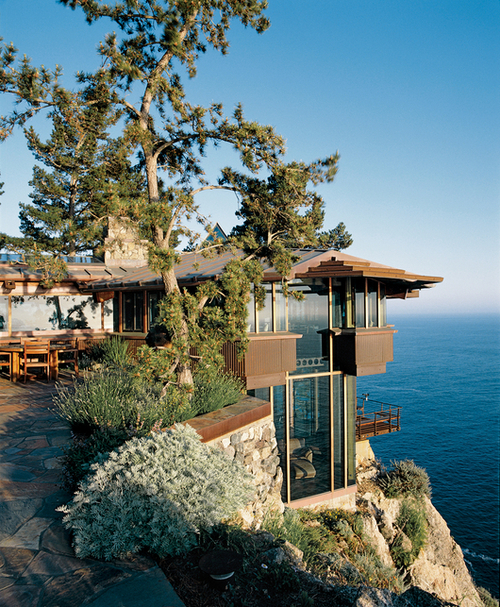Similar to the settlement pattern of Big Sur, Spanish leader Juan Rodriguez Cabrillo sailed into San Diego in 1542 and took control over the region, where Native Americans were forced out as well. Upon arrival, Spanish settlers started setting up missionaries in cities, as was the case in Big Sur, where it became a Catholic Ministry, along with Monterey, where Father Junipero Serra set up missionaries.
One of the major revolutionary changes that took place in California was the development of of the transcontinental railroad in San Francisco in 1869. The development of trolleys and other forms of transportation across town was developed in the 19th and 20th centuries, including the San Francisco-Oakland Bay Bridge and Golden Gate Bridge. The construction of the Golden Gate Bridge made way for much of the tourism that occurs in San Francisco.
These events were very similar to the building of Big Sur's Scenic Highway 1. It drew many tourists traveling to Northern California to visit the region and appreciate the beauty of the bridge. Not only did the constructing of the bridge in San Francisco and the highway in Big Sur take a long time, but it had the same result, which was an increase in tourist activity.
In 1962, a landmark court case was opened by Monterey County's government to ban billboards and other distractions on Highway 1. After the case was affirmed, the county was recognized as having one of the most stringent land use laws. They banned any new construction that was in close proximity to Highway 1
From 1964-1971, Big Sur hosted an annual music festival, where some of the most famous artists would go up there to perform. Amongst them were the Beach Boys, who dedicated several music tracks to Big Sur. Red Hot Chili Peppers has also dedicated one of their songs "Road Trippin'" to Big Sur, following a road trip one of the lead singers and the guitarist took to Big Sur many years ago. A documentary was published called "Celebrations at Big Sur" (trailer shown below) that captured the moments where people would come together at Big Sur and enjoy the music. This is somewhat like the music festival Coachella that is held annually in Palm Springs, where tons of people (myself included) travel to Indio Valley for the 3 night event.
In chapter 15, when reading about the various cities in California, I read that many of the wealthy people live closer to the coasts, or scenic and mountainous areas. After coming across several informative websites about living situations in Big Sur, I read that most of the retired elderly like to spend some time living in Big Sur, along with wealthy individuals who like to purchase vacation homes for some solitude.
The Basin Complex Fire of 2008 was the biggest natural disaster that occurred in Big Sur. It happened on the weekend of July 4th in 08' and forced residents out of the town to evacuate. The fire that burned over 130,000 acres of land was known to be one of the largest fires in California. It burned down nearly 30 homes, and cut the tourist economy by 1/3.
Big Sur is also known for its scenic hiking trails. It includes many different trails, ranging from long to short, to flat hill to uphill. The Pacific Valley Bluff Trail is the most scenic coastal trail that crosses grass fields over to the rocky cliffs high above the ocean.
References:
http://en.wikipedia.org/wiki/Big_Sur
http://www.hikinginbigsur.com/hikes.html







No comments:
Post a Comment